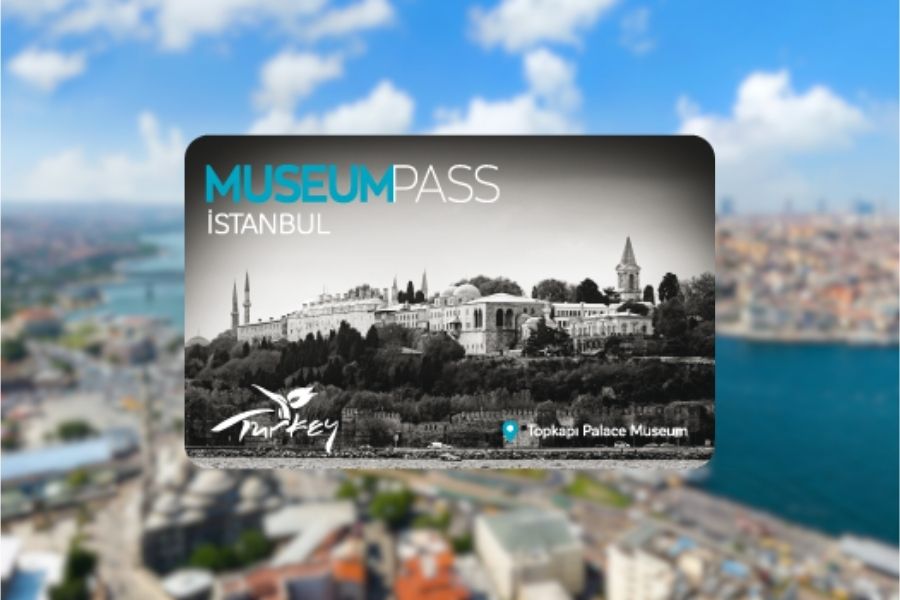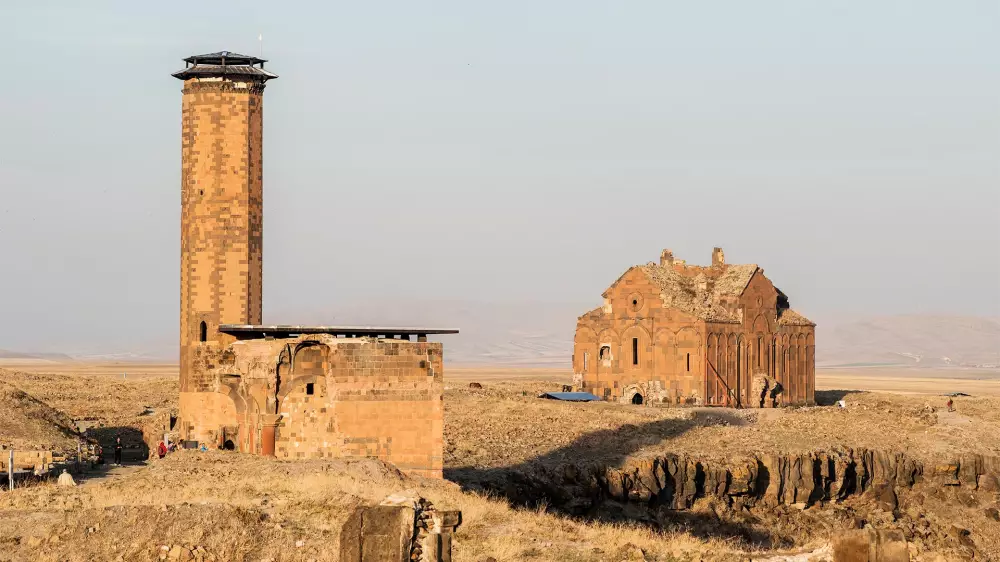
İstanbul: The World’s Most Beautiful City With A History of 300 Thousand Years
Yes, we are welcoming you in our text in which we give an account of the history of Glorious İstanbul from the past to the present, renowned as the most beautiful city in the world whose history goes back 300 thousand years. I will cut it short and come to the point. But I should tell you at the outset that this text will be a little longer than our other texts about history, but in no way in the form of a lecture on history. I promise you; it will be a text that you will read with ease without getting bored.
First, let's look at the etymology of the city's name. Throughout history, İstanbul was called under several different names. Its first name was Byzantium, followed by Augusta Antonia and later Nova Roma… Later, the name of the city changed again and became Constaniniyya, the Arabic form of Constantinople. The city was then called İslambol, which turned into the current name in later times, namely İstanbul.
By the way, we would like to share a small piece of information, namely that different civilisations also named İstanbul under very different appellations. For instance, Mongolians called it Çakduryan, Poles Kanatorya, Czechs Aylana, and Hungarians Vizenduvar. But have no fear! You do not have to sit for an examination for these names. We will certainly not cite the city as Vizenduvar further in the text. You don’t have to learn them by heart.
There exist so many accounts regards the name of the city in older times. But focusing on the city itself rather than its name, we will take you on a time voyage that stretches step-by-step from antique times up to the present time.
First Human Communities In Istanbul
The first human communities confirmed in historical records lived in a cave called Yarımburgaz Cave next to the lake nowadays known as Küçükçekmece Lake. Excavations conducted in the area have provided evidence that these humans lived in the Neolithic Age, also called New Stone Age, between 8000 and 5500 B.C. The excavations in and around the district of Dudullu have even unearthed tools that were made in the Palaeolithic Age, namely in a time between 2 million and 12 thousand years ago.
Okay, okay, that was too far away in time. Now let’s move towards our time.
Byzantine Period
We said, towards our time, not just towards today. We are still in the New Stone Age, around the 6500s B.C. The archaeological finds from this age particularly unearthed in the excavations during the construction of the İstanbul Underground Railway that began in 2008 are indicators of the history of this city stretching back to ancient times. Apart from these, findings dating back to the 5500s B.C. have also been unearthed in the excavations performed in Fikirtepe and the surrounding area. Well, what about Byzantium? It is as follows.
As already mentioned above, Byzantium was the first appellation of Istanbul in recorded history. Besides, in that age, the city was located on an area that stretched from the place where the Topkapı Palace stands today towards the southwest of the Bosporus, and from Golden Horn towards the Marmara Sea.
Speaking of this age, we should make mention of the Thracians as well. This name most probably reminds our Turkish readers of the region of Thrace; they are right because the Thracians were a people that lived in Thrace and the surrounding region in ancient times. In the 13th century B.C. they established the city of Semistra in the vicinity of İstanbul, a city that existed for 200 years until the 11th century B.C.!
According to historical accounts, a settlement with Acropolis, namely a citadel built on elevated ground, was established in Sarayburnu during the reign of King Lygos. When the calendars showed the year 685 A.D., people of Greek origin came to the area from Megara, an antique city in the Attica region on the mainland of Greece, and established a colony here. In 677 A.D. King Byzas began to rule the area, as a result of which the city of Byzantium was established and began to flourish in the region.
As a result, İstanbul was now under the rule of the Roman Empire, and Septimus Severus, the Roman King, named the city, though for a short period, after his son Antonius, thus turning the name of the city into Augusta Antonina.
As the pages of history books showed the year 306 A.D., it was Constantine I. who became the king of the Byzantine Empire and declared İstanbul into the capital city of the empire with the name Nova Roma. But people did not appreciate this name, which was turned into Constantiniyya after the death of the emperor.
Capital City of The Byzantine Empire: Constantinople
Yes, we are now in the years marked with A.D. in calendars, around the year 300 Anno Domini. This city is now a part of the Byzantine Empire, serving it as its capital city. Above we mentioned the name of the city as Constantiniyya. As time passed, the city grew and developed into a trade centre, then the name became Constantinople, consisting of Constantine and ''polis'' meaning city in Greek, namely the city of Constantine.
This period in question spanned between 324 and 1453 A.D. Although, during this period, the city was beleaguered several times, and the Roman Empire was split into two, namely the West and East Roman Empire, which continued to exist as the Byzantine Empire, İstanbul never lost its importance, but on the contrary, it further grew and developed into a centre of diplomacy, culture, and trade, during which time aqueducts and numerous monuments of great cultural and historical value were built in the city. The square currently known as Sultanahmet Square was reorganised into one with a hippodrome in which horse and cart races were held in honour of the ruling emperor, with spectacular parades of soldiers. In this way, the Byzantine Empire adopted Christianity as its state religion just a few days after the death of Constantine I. The empire that had a religion based on paganism then became an entirely Christian country about 300 years after the birth of Jesus Christ.
Then, in 476 A.D. the western part of the byzantine empire, namely the Western Roman Empire, collapsed and dissolved, as a consequence of which a great number of the people in the western part migrated to Constantinople. But the sources of the city got short over time, and in 543 A.D. an epidemic of plague hit the city, killing half of its population. After this disaster that cost the lives of half of the city's population, the city was reduced to ruin and desolation. In response, Justinian I., the then emperor, had the city entirely reconstructed.
The years went by, making us arrive in the year 700 A.D. It was the year when the city already with a history of thousands of years was sieged by Sassanid Persians and Avars. In later centuries, the city had to face a series of besiegers, namely Bulgarians and Arabs in about 800 A.D. and Russians and again Bulgarians in 900 A.D…
As we said before, this wonderful city was beleaguered and invaded several times, the most devastating one being the invasion that took place in 1204 A.D. It was the Crusaders that invaded the city in that year during the Fourth Crusade, massacring the people, looting and devastating Constantinople into a city of ruins and desolation. The events even lead to the reconstruction of the tower in the district of Pera, today known as Galata Tower. You can ask yourself, ''They were both people of Christian faith? Why did they have such hostility against each other?''. So, it is as follows: While the people of Latin origin living in the West Roman Empire were bound to the tradition of the Roman Catholic Church, the Christians in Byzantium, on the other hand, believed in the doctrine of Orthodoxy within Christianity. In short, they harboured two doctrinal approaches in the one and same religion… And thus, this wonderful city of the period was devastated into ruins…
But don't feel sorry for the city. Later in 1261 A.D., Michael VIII. from the Palaeologus Dynasty, the then King of Byzantium reconquered the city and made great efforts to get it back to its former glory.
İstanbul During The Ottoman Rule
As we have already said at the outset, this text will be a little longer than other usual texts… We are now at the half of it. But we don’t think you have got bored, because what we will tell you now will especially interest you, I assure you. So, let’s get started.
The Ottoman Empire was founded based on Islamic rules, and until its fall it remained one of the most powerful states in the world. The words of Mohammed, Prophet of Islam, for İstanbul, ''One day Constantiniyya will be conquered. Blessed be the commander and the army that would accomplish this goal!’’ encouraged every Ottoman Sultan, including Mehmet II., the Conqueror, to make their best efforts to convert people of other religions. For instance, Sultan Yıldırım Beyazıd got the fortress of Anadoluhisarı built, but he had no success. The greatest dream of the Ottoman Sultans until the 1450s, namely the reign of Mehmet II., was to conquer this wonderful city, a desire based on Islam. Sultan Mehmet II. initiated the preparations to this end as soon as he ascended the throne, putting his plans into practice, which he had been designing since he was 17 years of age, and he was 21 years old when he beleaguered the city.
Byzantium had, however, experience against sieges. As they did during the Fourth Crusades, they placed a defensive chain at the entry of the Golden Horn. They also took measures to correct the causes of the failures they had committed during the Fourth Crusades. But Mehmet II. was determined; this time the city had to be conquered. Then he had the Rumelihisar Fortress erected in a short time of 90 days intending to prevent that Byzantium would get no support through the seaway, and as an additional measure against the chains placed at the entry of the Golden Horn, he moved the ships on land over the Tophane Hills to Kasımpaşa. Here you can have a look at our route of ‘’the Moving Ships of the Conqueror’’. If you wish, you can also experience the same event after so many centuries.
Well, let's get back to the subject. The siege that began on April 6, 1453, ended May 29, 1453, and Sultan Mehmet II. became the conqueror of Constantiniyya as Muhammed the Prophet prophesized it, as a result of which he was awarded the title Sultan Mehmet the Conqueror. In recent times, the second bridge built on the Bosporus to link Asia with Europe has also been named after the Sultan Mehmet the Conqueror.
Let's look at the period after the conquest. After the conquest, İstanbul became the jewel of the Ottoman Empire, even overshadowing Bursa and Edirne, the then most important centres. In the following centuries, numerous fountains, pavilions, and palaces of great artistic value were built in İstanbul, which also served as a capital city for the empire for a certain period. The city that was first named İslambol (a city full of Islam)which later turned into İstanbul became a centre of attraction for not only the Ottomans but also for the whole world.
İstanbul In The Republican Era
On October 29, 1923, the Republic of Turkey was established under the leadership of Gazi Mustafa Kemal Atatürk, the Great Leader and Head Teacher of Turks. İstanbul, the capital city of the Ottoman Empire, has retained its value in the republican period as well, but the capital of the republic was removed to Ankara. That many tourists presume today İstanbul to be the capital city of Turkey has its roots in this historical background as well as promotions for the city.
İstanbul that is called as the city which never sleeps, with nights and days one more wonderful than the other is still accepted to be the most beautiful city in the world, despite its dense population and unplanned construction.



